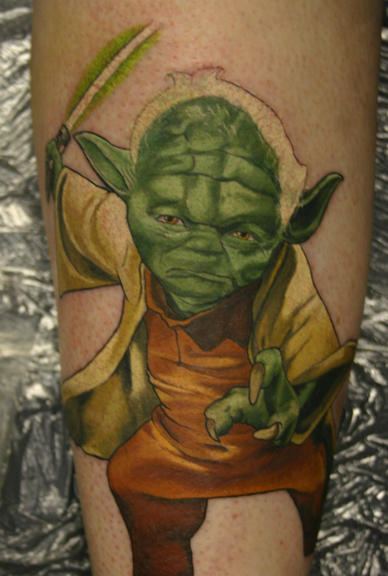Temporary Tattoo Designs Are The Perfect Trial Solution
by: Richard Davies
Temporary tattoo designs are now very popular. At one time there were only a few sources to get hold of your temporary tattoo designs such as the dispensing machines or local store if you were lucky, but these days they are very widely available. When I was little we used to think how fantastic we were by sporting a temporary tattoo. They weren't much fun to pull off if they didn't go on properly but that never stopped us. Temporary tattoos are also a great 'primer' when deciding on whether or not you really want to go the whole hog and get a real life one.
You can source temporary tattoos in a wide variety of depictions and sizes, from small to large. You name it, the design is available in temporary tattoo design form, from the more traditional tattoos to ultra cool, funky and stylish modern ones. Want a cute dolphin on your left shoulder to try out? No problem. How about a barbed wire depiction on your ankle. You got it. You may want to opt for a word phrase in graphic art tattoo form. Well, those are available too.
I have noticed a trend in real life tattoos towards all black ink designs. You can also find these in the form of temporary tattoo designs and they are well worth taking a look at as they cover a multitude of subject matters.
Celtic designs are every popular and this is no exception with temporary tattoo designs. When considering these rather more traditional designs in real life, you may want to try a temporary one first. It is a good idea to choose a real life tattoo that has some importance to you as an individual or at least something you can identify with. A temporary tattoo affords you the luxury of trying out different designs and how they would look without worrying about the reasons you are choosing the tattoo to adorn your body.
There are even packages available on the market that allow you to make your own temporary tattoo designs. How fantastic. You design the tattoo using what is available in the package and then transfer them onto the desired part of your body that you wish the tattoo to be. Above all, temporary tattoo designs are great fun and anybody can give them a go without having to commit full time to a real tattoo.
What Is a Tattoo?
 Let's quickly remind ourselves exactly what a tattoo is: A tattoo is a permanent mark or design made on the body when pigment is inserted into the dermal layer of the skin through ruptures in the skin's top layer.
Let's quickly remind ourselves exactly what a tattoo is: A tattoo is a permanent mark or design made on the body when pigment is inserted into the dermal layer of the skin through ruptures in the skin's top layer.
Modern-day tattoos are applied by using an electric tattoo machine with needles that rapidly puncture the skin with an up and down motion not unlike that of a sewing machine.
Subscribe to:
Post Comments (Atom)
How Do Lasers Remove Tattoos?
 How Do Lasers Remove Tattoos
Lasers work by producing short pulses of intense light that pass harmlessly through the top layers of the skin to be selectively absorbed by the tattoo pigment. This laser energy causes the tattoo pigment to fragment into smaller particles that are then removed by the body's immune system. Researchers have determined which wavelengths of light to use and how to deliver the laser's output to best remove tattoo ink. (If you're wondering if the laser might also remove normal skin pigment, don't worry. The laser selectively targets the pigment of the tattoo without damaging the surrounding skin.)
How Do Lasers Remove Tattoos
Lasers work by producing short pulses of intense light that pass harmlessly through the top layers of the skin to be selectively absorbed by the tattoo pigment. This laser energy causes the tattoo pigment to fragment into smaller particles that are then removed by the body's immune system. Researchers have determined which wavelengths of light to use and how to deliver the laser's output to best remove tattoo ink. (If you're wondering if the laser might also remove normal skin pigment, don't worry. The laser selectively targets the pigment of the tattoo without damaging the surrounding skin.)
Sexy Tattoo for Women video
Tattoo inks
 Modern tattooing inks are carbon based pigments that have uses outside of commercial tattoo applications. Although the United States Food and Drug Administration technically requires premarket approval of pigments it has not actually approved the use of any ink or pigments for tattooing (because of a lack of resources for such relatively minor responsibilities).[citation needed] As of 2004 the FDA does perform studies to determine if the contents are possibly dangerous, and follow up with legal action if they find them to have disallowed contents, including traces of heavy metals (such as iron oxide) or other carcinogenic materials (see CA lawsuit). The first known study to characterize the composition of these pigments was started in 2005 at Northern Arizona University (Finley-Jones and Wagner).
The FDA expects local authorities to legislate and test tattoo pigments and inks made for the use of permanent cosmetics. In California, the state prohibits certain ingredients and pursues companies who fail to notify the consumer of the contents of tattoo pigments. Recently, the state of California sued nine pigment and ink manufacturers, requiring them to more adequately label their products.
Modern tattooing inks are carbon based pigments that have uses outside of commercial tattoo applications. Although the United States Food and Drug Administration technically requires premarket approval of pigments it has not actually approved the use of any ink or pigments for tattooing (because of a lack of resources for such relatively minor responsibilities).[citation needed] As of 2004 the FDA does perform studies to determine if the contents are possibly dangerous, and follow up with legal action if they find them to have disallowed contents, including traces of heavy metals (such as iron oxide) or other carcinogenic materials (see CA lawsuit). The first known study to characterize the composition of these pigments was started in 2005 at Northern Arizona University (Finley-Jones and Wagner).
The FDA expects local authorities to legislate and test tattoo pigments and inks made for the use of permanent cosmetics. In California, the state prohibits certain ingredients and pursues companies who fail to notify the consumer of the contents of tattoo pigments. Recently, the state of California sued nine pigment and ink manufacturers, requiring them to more adequately label their products.



















No comments:
Post a Comment